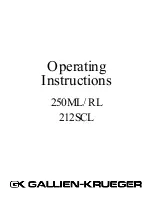
Repeater Commissioning
Downlink gain setting
First the alarm LED only indicates the downlink input power level, here we use color of Alarm LED to adjust the gain of the
repeater. Alarm LED color must remain green. As for the downlink working performance, it is a good working point that Alarm LED
maintains “Green” color with the intention of turning orange; here we refer as “edge point”. At this time, downlink output power
and coverage effect are stable.
And the equipment must be as far as possible away from overloading status of “red” (the equipment would hold higher
interference and depression ability at this stage). So we shall try our best to set the equipment near “edge point” of green and
intention of turning orange during engineering.
Setting of “edge point”:
Switch on the power supply after connection with donor antenna and server antenna, and observe ALARM LED.
• If it shines “orange”, use 1dB as step to reduce the gain until “green” turns on, then increase the gain 1~3dB attenuation
value until “orange” starts to turn on, then brings back 1~2dB till “green” is on, then fix the gain and the repeater’s
downlink output power reaches the perfect status.
• If it shines “green” then:
◦
Please check coverage effect firstly, if the coverage effect is good, the engineering has reached expecting
target, thus there is no need to do anything.
• To check whether the attenuation value has been set, if it is, use 1dB as step to increase gain until the “orange” turns on,
then brings back 1~2dB till “green” is on again , then the repeater’s downlink output power reaches the perfect status.
• But if attenuation has not been set, it indicates that the input power is not strong enough to let the repeater reach its
good coverage.
If the coverage effect is not good, the donor antenna should be adjusted to get stronger input signal. It is recommended that one
person shall check the coverage effect inside the building when the other person is trying to adjust the antenna or the repeater. At
this stage, please make sure “Orange” color will not be generated by self oscillation. Please take off the server antenna to check if
it is self oscillation or not: if the Orange turns to be green, it is self oscillation; if it stays as Orange, it is not self oscillation. Please
follow steps in other page to turn Orange to be Green.
Uplink gain setting
Standard: uplink attenuation values =downlink attenuation values
Remark
: Avoid putting more than a 5dB difference between the Uplink and Downlink. And Uplink gain must be equal to or less than
Downlink gain, it can’t be more in order to avoid interference with mobile network.
Questions & Solutions
What signal level in dBm is optimal for the correct booster functioning?
For the optimal functioning of the booster, the BS (input) readings should be between - 65 and 50 dBm. The MS (output power)
readings must be b05 and +15 dBm. Device Gain must be 65/65 dB. If the BS is lower than - 65dBm, the coverage will be
smaller. However, the device can work normally. If the BS is too weak, it'll be necessary to adjust the position of the outdoor
antenna by raising it as high as possible (on a pole on the rooftop) and pointing it towards the provider's nearest base station. If
the BS is higher than - 50 dBm, the device will have a self-excitation issue. In those conditions, the output signal will drop during
communications. If the two antennas are placed very close to each other, it will evoke self-excitation. To fix the problem, you
would need to place the outdoor antenna at the largest possible distance from the indoor antenna.







































